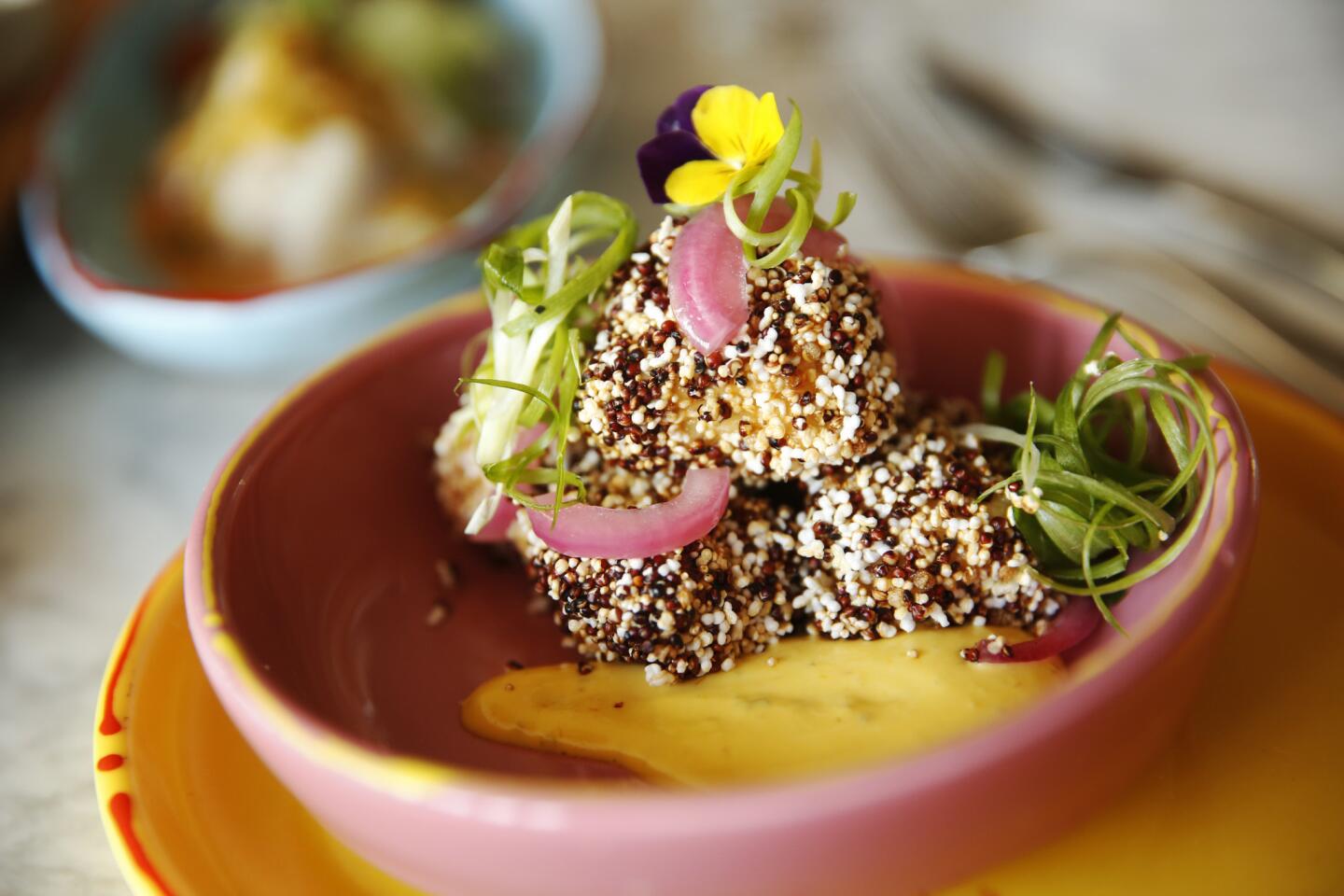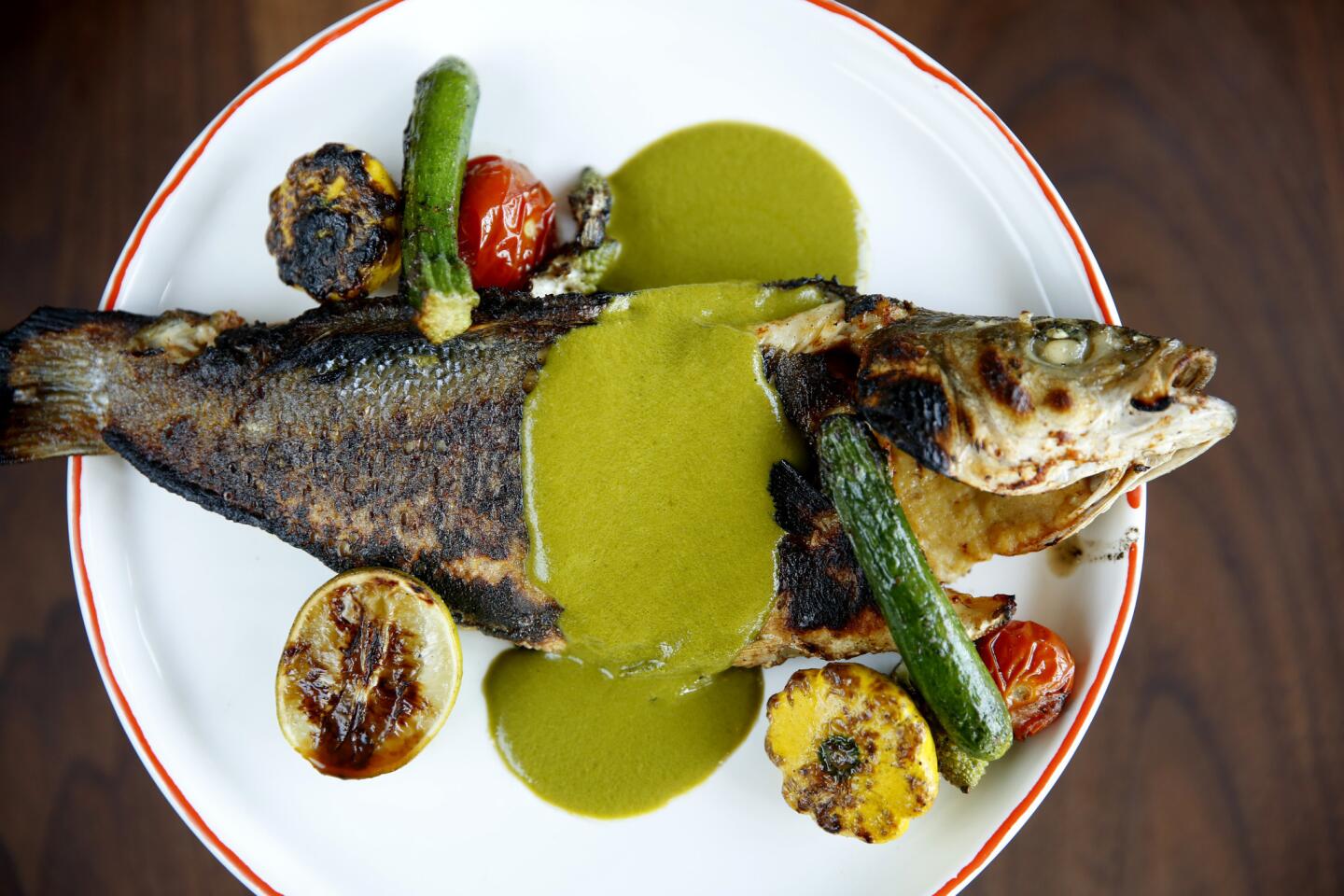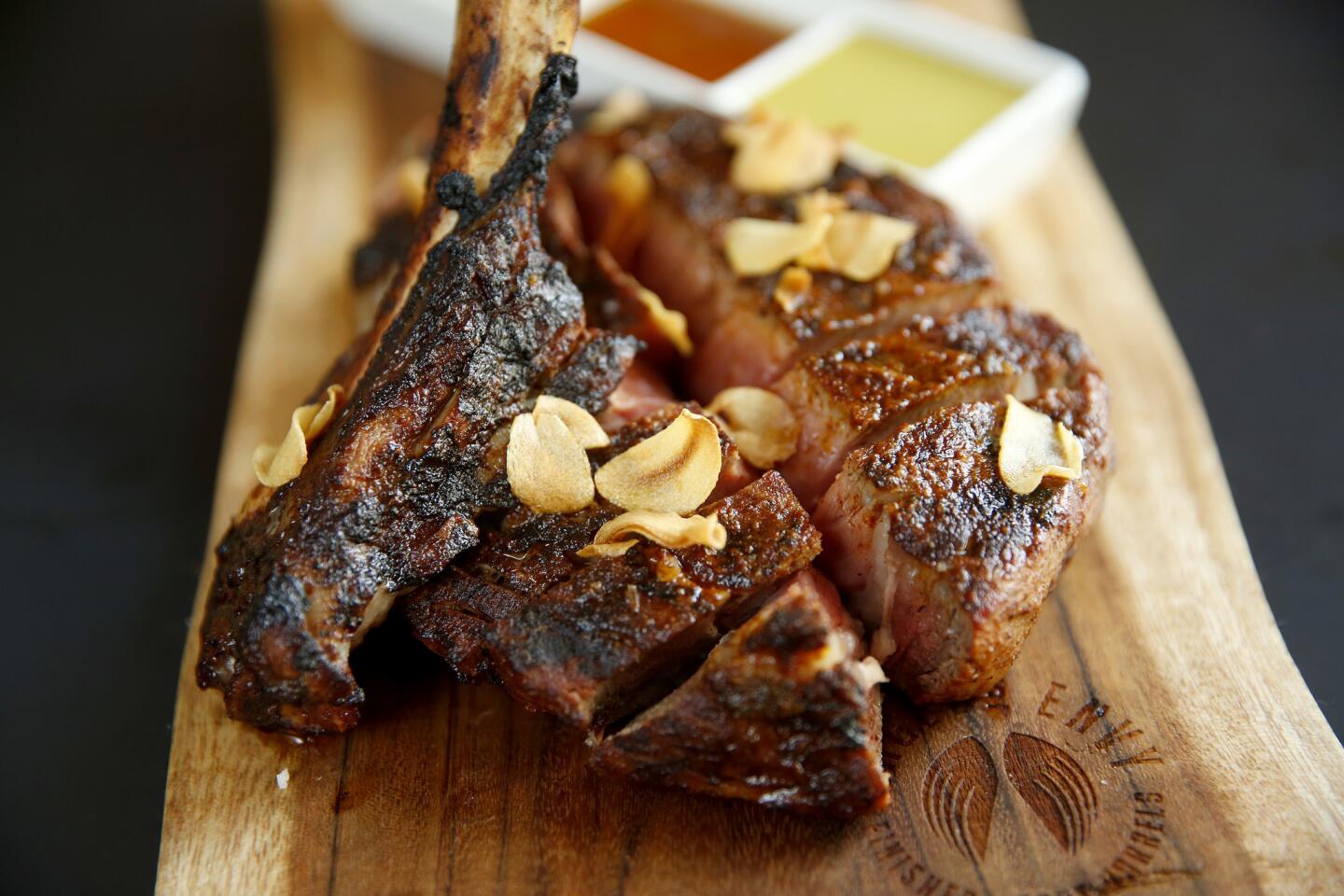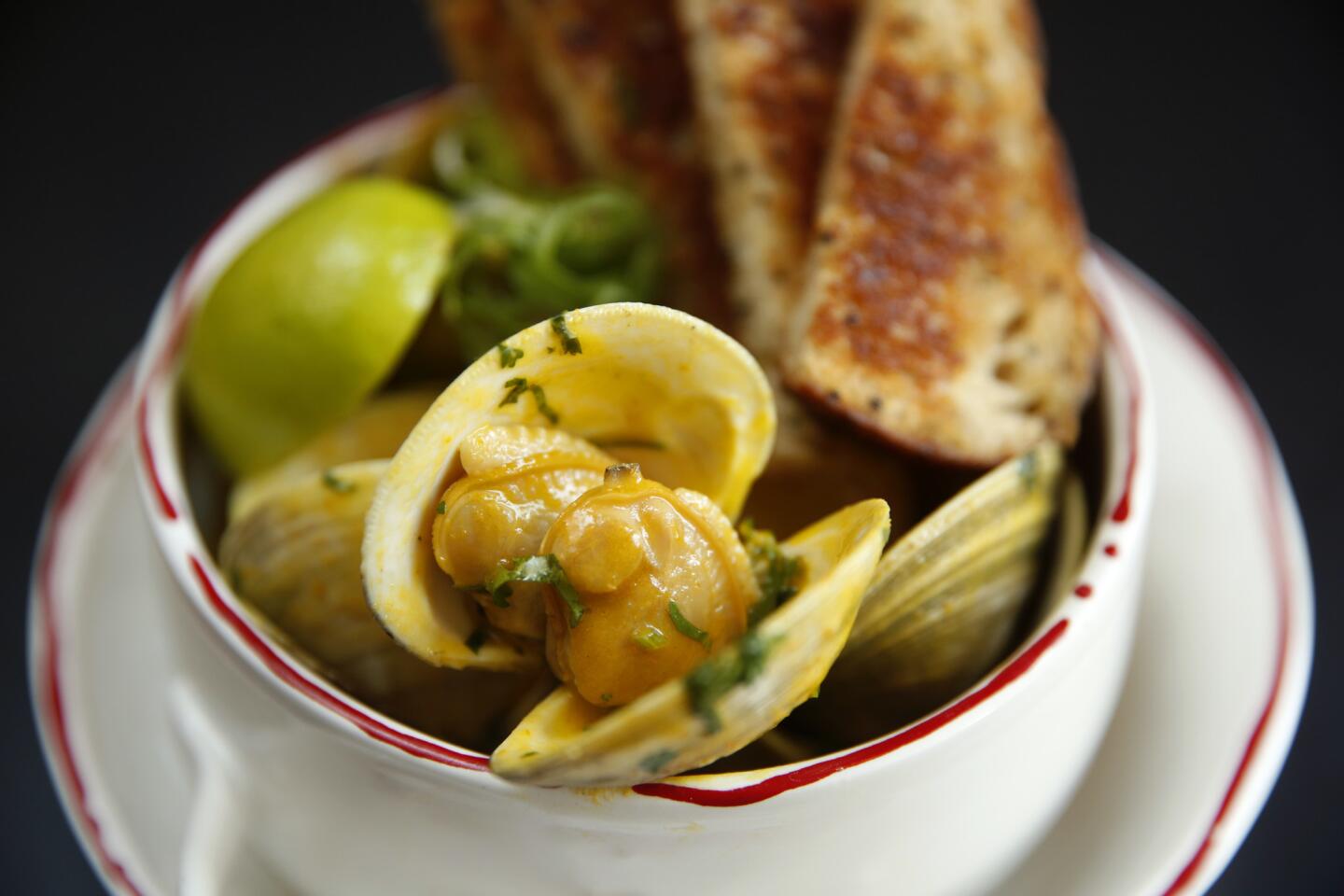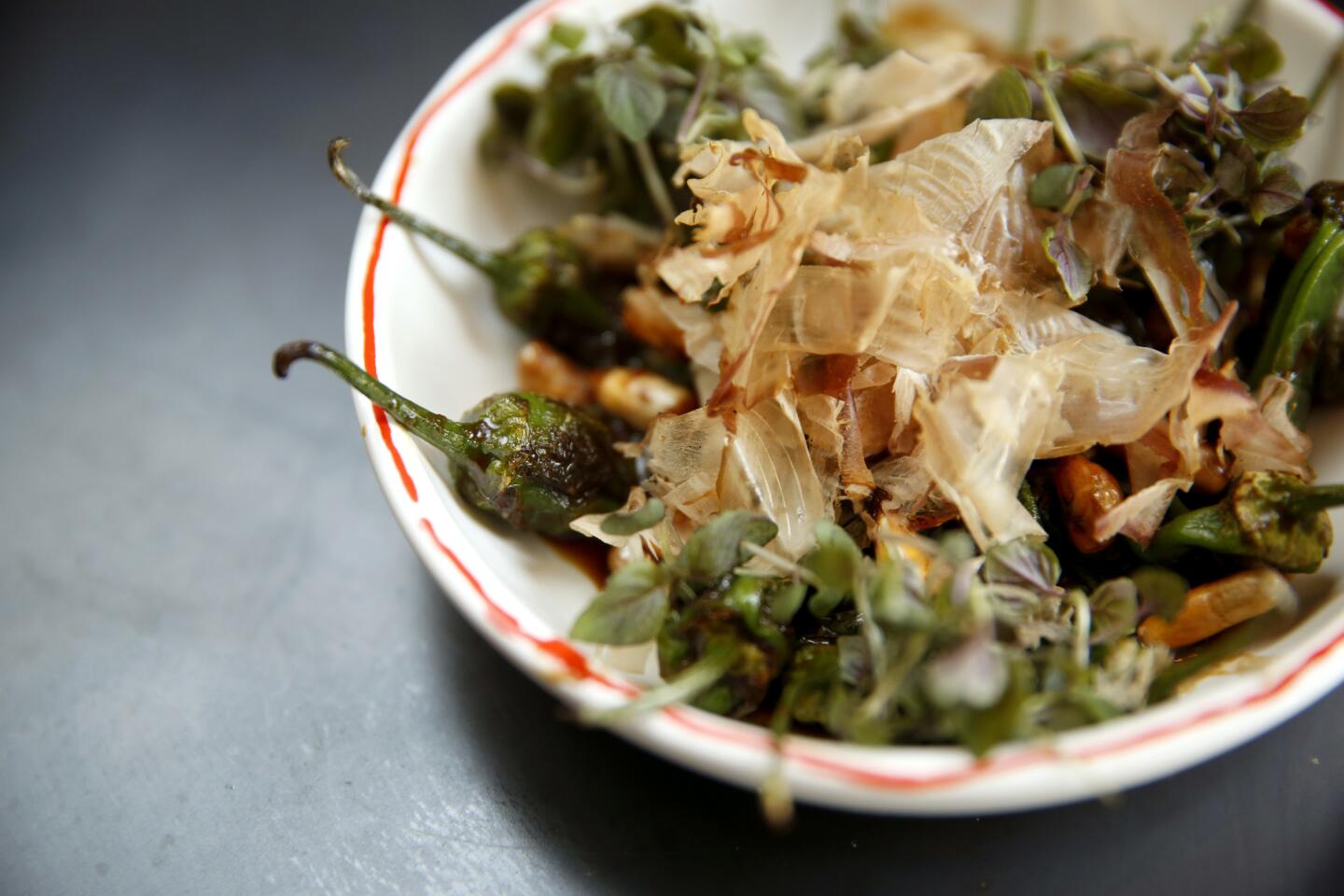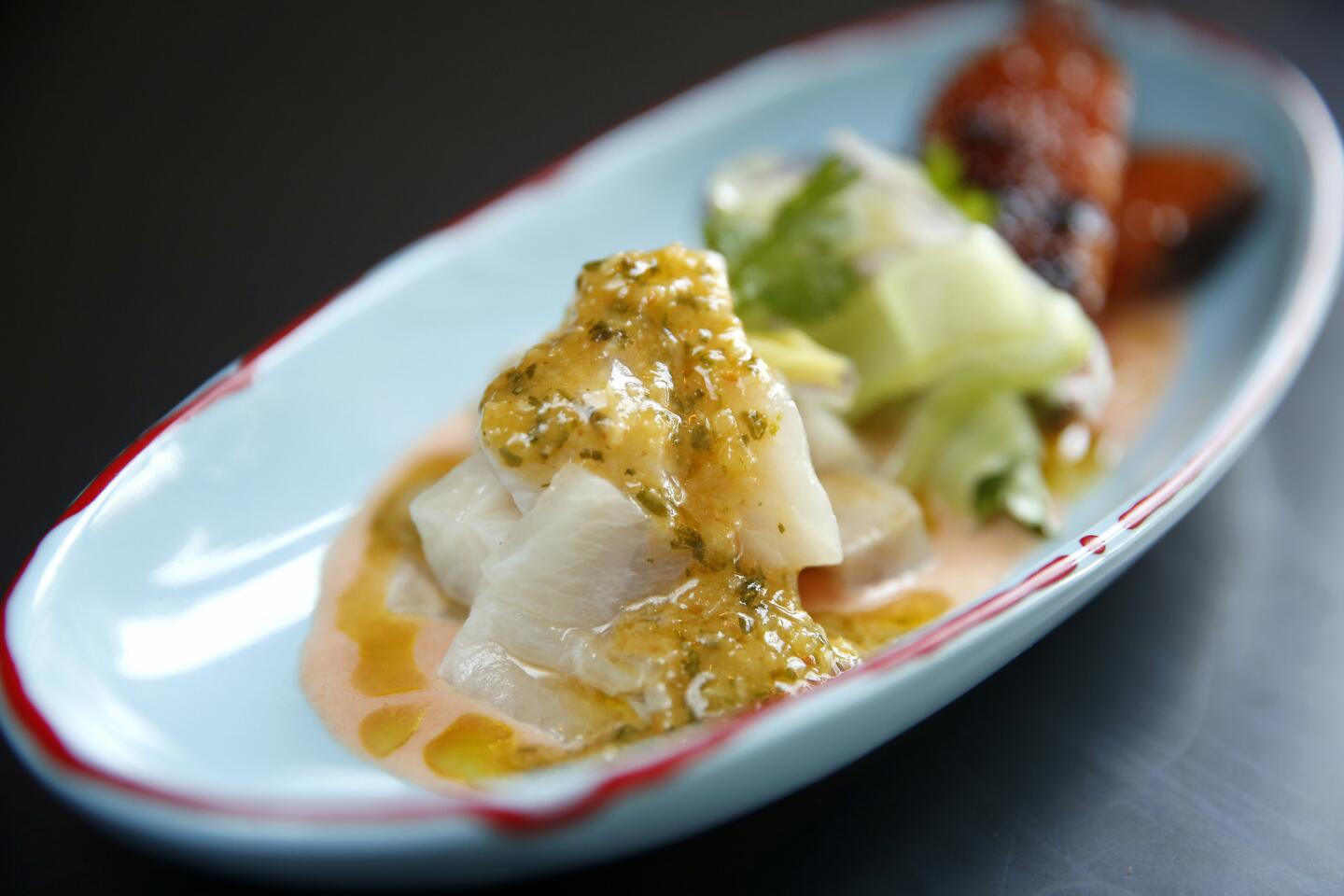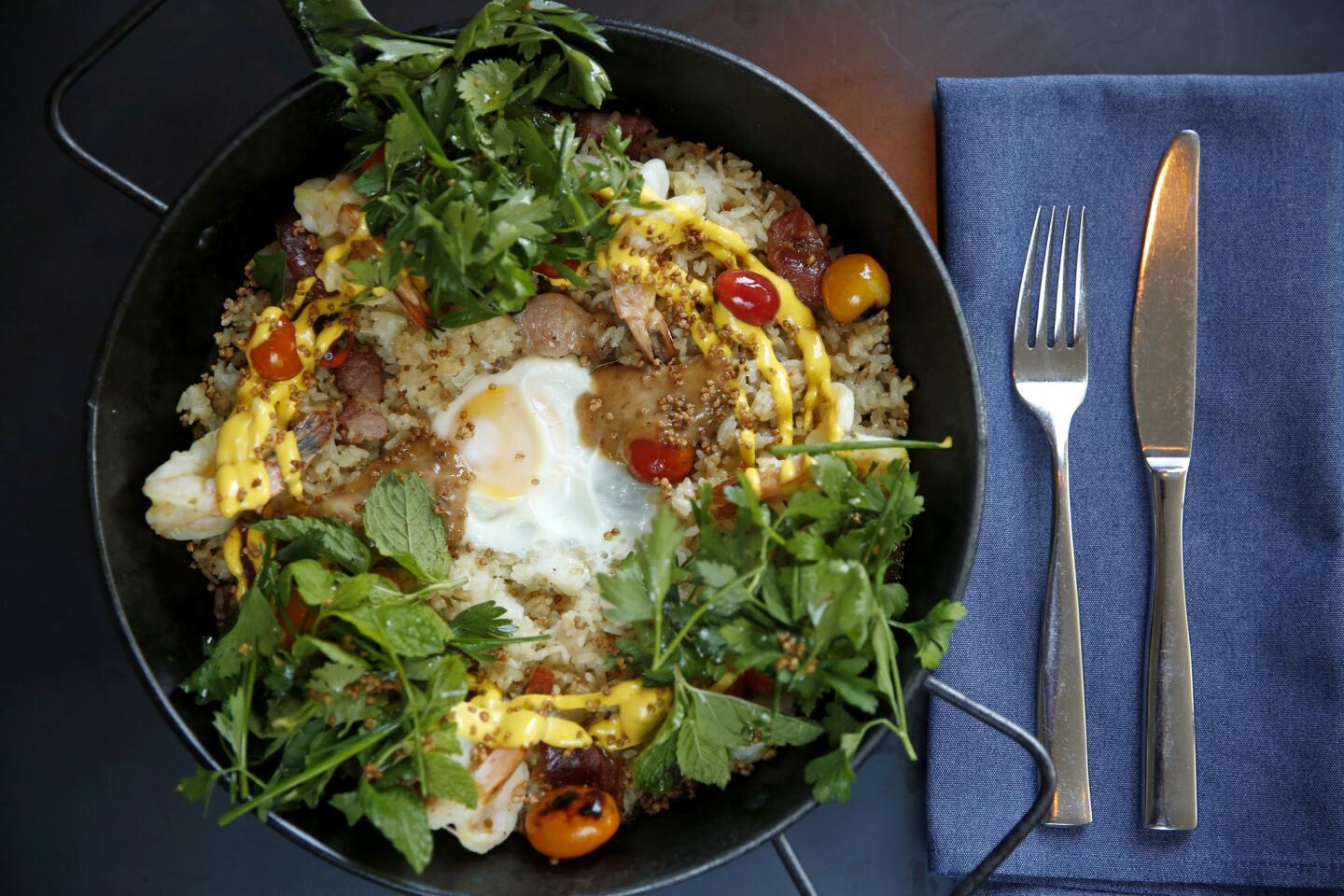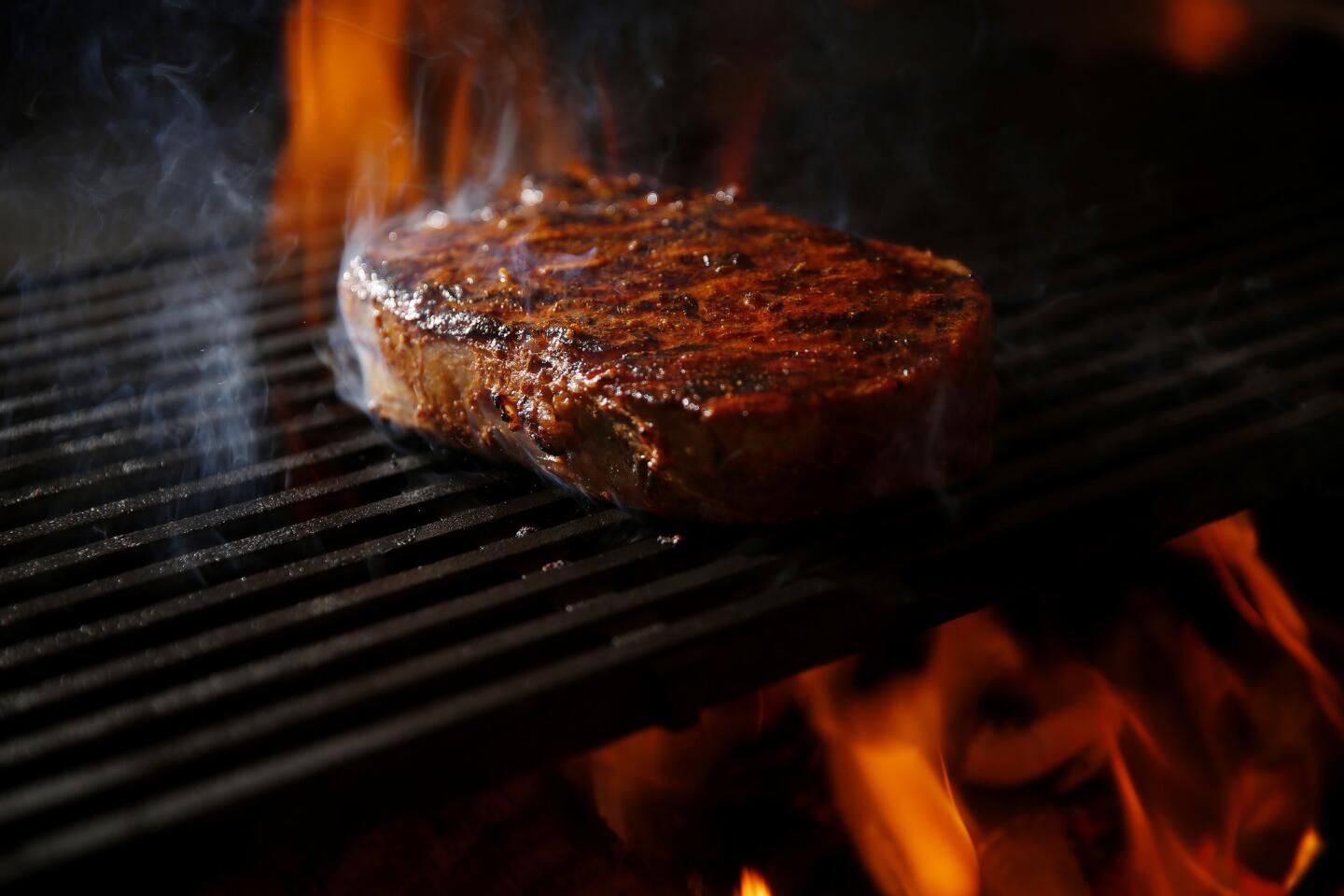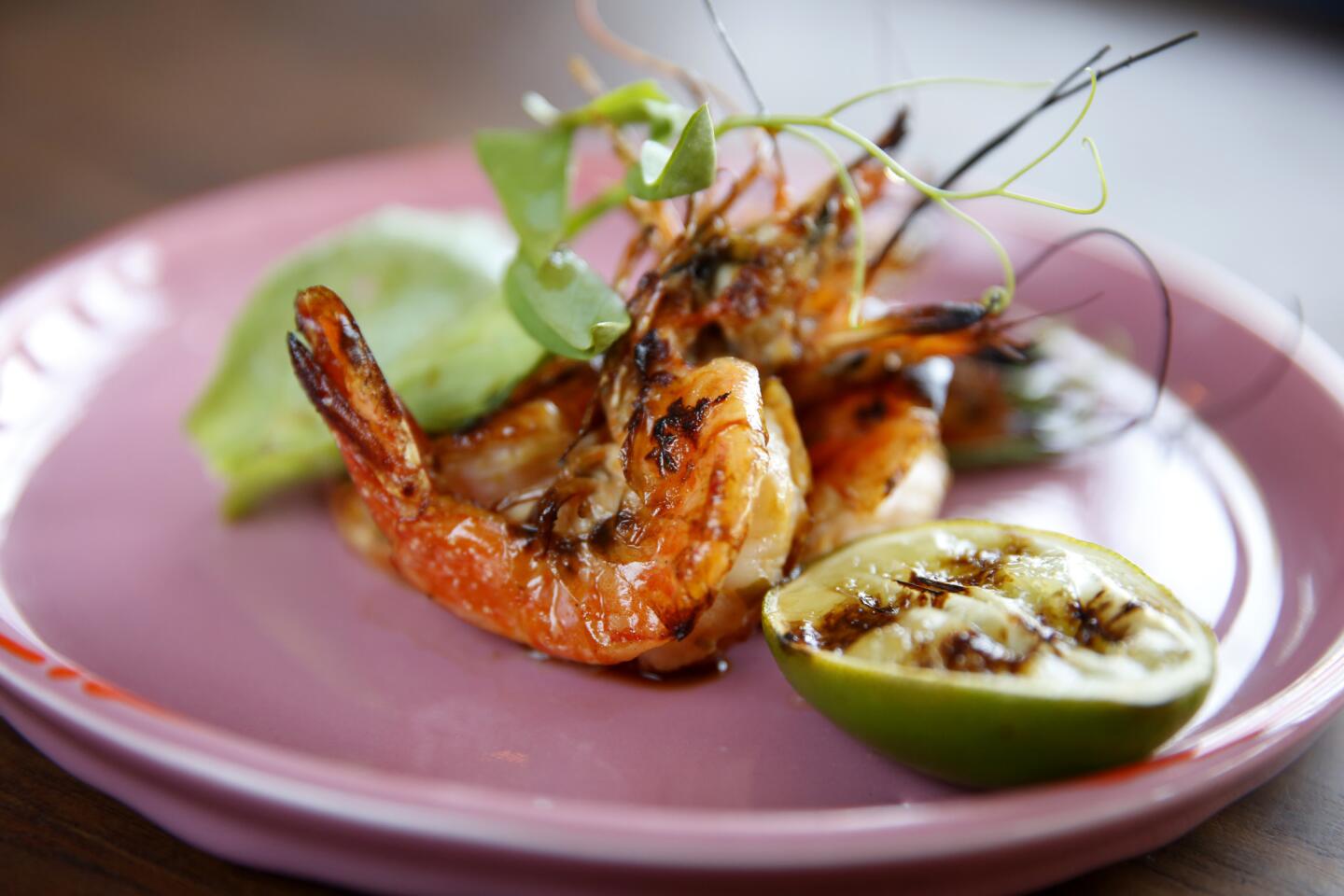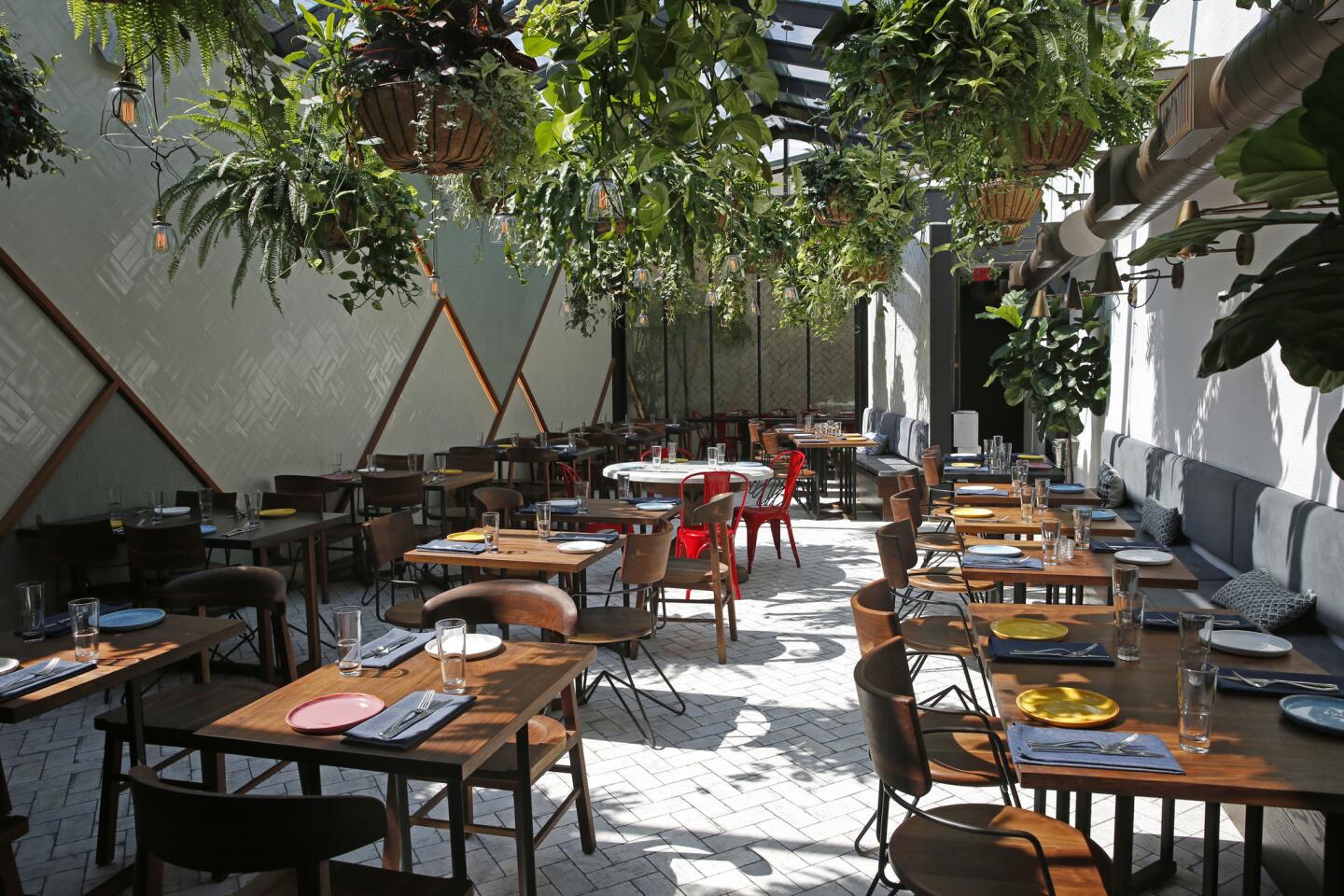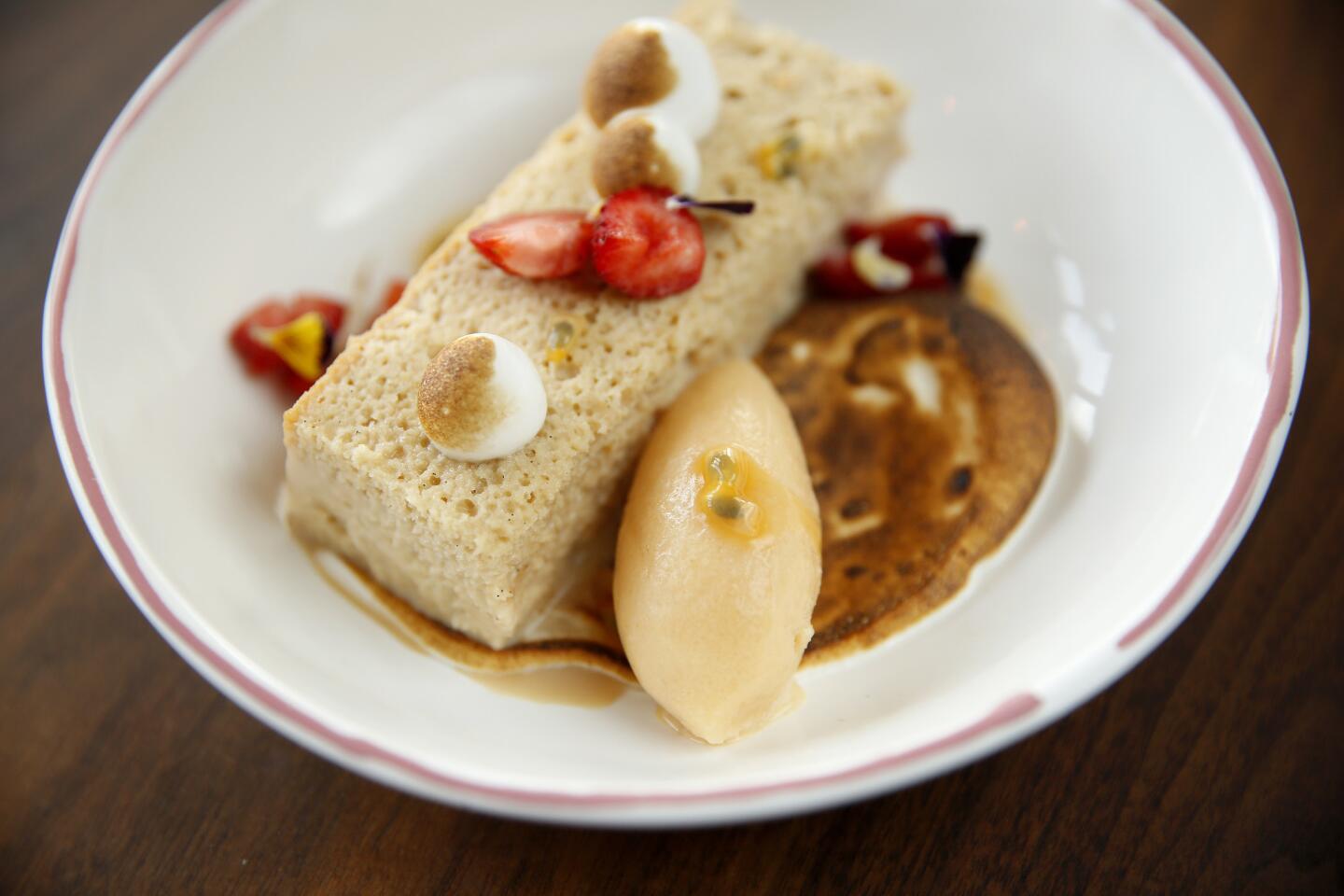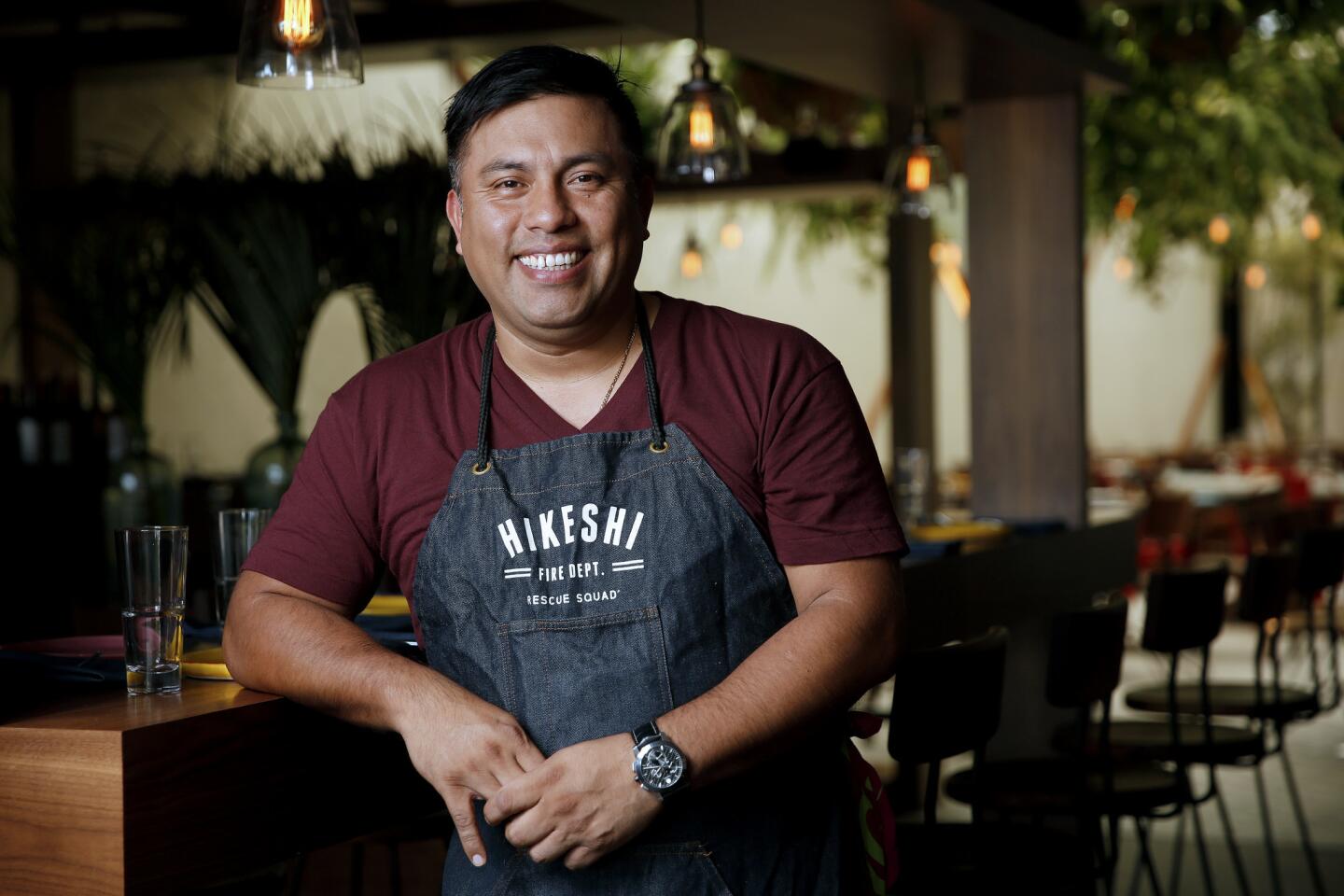Review: Ricardo Zarate’s Rosaliné is a Peruvian party. Jonathan Gold orders a pisco sour and has some fun
- Share via
A juane is an unusual dish in the Peruvian repertoire, a huge, overstuffed tamal from the headwaters of the Amazon, a kind of combo meal made in its area of origin as a convenient takeaway lunch for travelers. Juanes take their name from John the Baptist — the bulging roundness is said to resemble the severed head of the saint on a plate — and they are often served on his saint’s day. When wrapped in the traditional bijao leaf, the late chef Felipe Rojas-Lombardi wrote, it looks a little like a hobo’s bundle on the end of a stick. You can stow almost anything in a juane before you boil it — rice and chicken, yuca root, plantains, hearts of palm, ground peanuts, sometimes boneless fish.
At Rosaliné, the buzzy new Peruvian restaurant on Melrose, Ricardo Zarate makes his with chickpeas, hard-boiled eggs and pork shanks. Bijao is a little hard to find in California, so he steams everything in banana leaves. You’ve got to think he’s tinkered with the juanes a bit — the spicy-sweet Peruvian adobo occupies its own bit of the plate, the egg is neatly cut in two, and the leaf exists more as a hint of its existence than as an enveloping presence — but as you cleave bits of meat off of the shank, fork up shreds of tart marinated onion and spoon on a few drops of the sauce, you can at least imagine yourself somewhere in Loreto, even if the closest you’ve come to the Peruvian Amazon is the Mario Vargas Llosa novel on the reading list sophomore year. It’s a nice dish.
Zarate has been flitting around the Los Angeles restaurant scene for years, first at an Abbot Kinney Japanese fusion restaurant and then at the first Mo-Chica, at the Mercado La Paloma complex near USC. Mo-Chica was revelatory for its time, an informal stall in what amounted to a food court, that re-created traditional Peruvian saltados and ceviches with first-class meat and seafood from the better purveyors in town, a chance for the chef to step away from caterpillar rolls and squirt-bottle sauces toward the criollo food he’d grown up on. He was quickly honored on must-dine lists and earned Food & Wine’s best new chef award. There was a partnership with Bill Chait, a fancier downtown Mo-Chica, the popular Picca south of Beverly Hills, Paiche in Marina del Rey, a restaurant in Santa Barbara, projects in London, and the cookbook “The Fire of Peru.” Then most of the restaurants closed and he more or less disappeared, doing the occasional Santa Monica pop-up dinner but staying almost invisible.
So it was delightful to discover Mamacita in the Hollywood & Highland center, where he rebranded his ceviches as poke bowls and his grilled meats as “Peruvian BBQ bowls.” It wasn’t quite Mo-Chica, but it was close. And at the new Melrose restaurant, in the loud, narrow space that used to hold the brasserie Comme Ça, his cooking seems more focused than it ever has, not quite classic Peruvian and not quite fusion, but a blend that seems to incorporate both of those ideas, overlaid with the cocktails and the tropical noise I’d always associated with the pan-Latino restaurants of the late 1980s. A pisco sour, a plate of corvine tiradito, waiters who always seem as if they’re auditioning for a show on FXX — it’s hard to have a bad time here.
The biggest flaw of Picca, I thought, was Zarate’s attempt to position the Peruvian snack causa into a sort of altiplano sushi with cold mashed potatoes at its base instead of rice. At Rosaliné, the causa is more like a causa, fluffy whipped potatoes layered in glass with beets, eggplant, mashed avocado and aioli, slightly resembling the sand-in-a-jar sculptures you may have assembled as a kindergarten project, but with a lovely, ice cream-like smoothness and density.
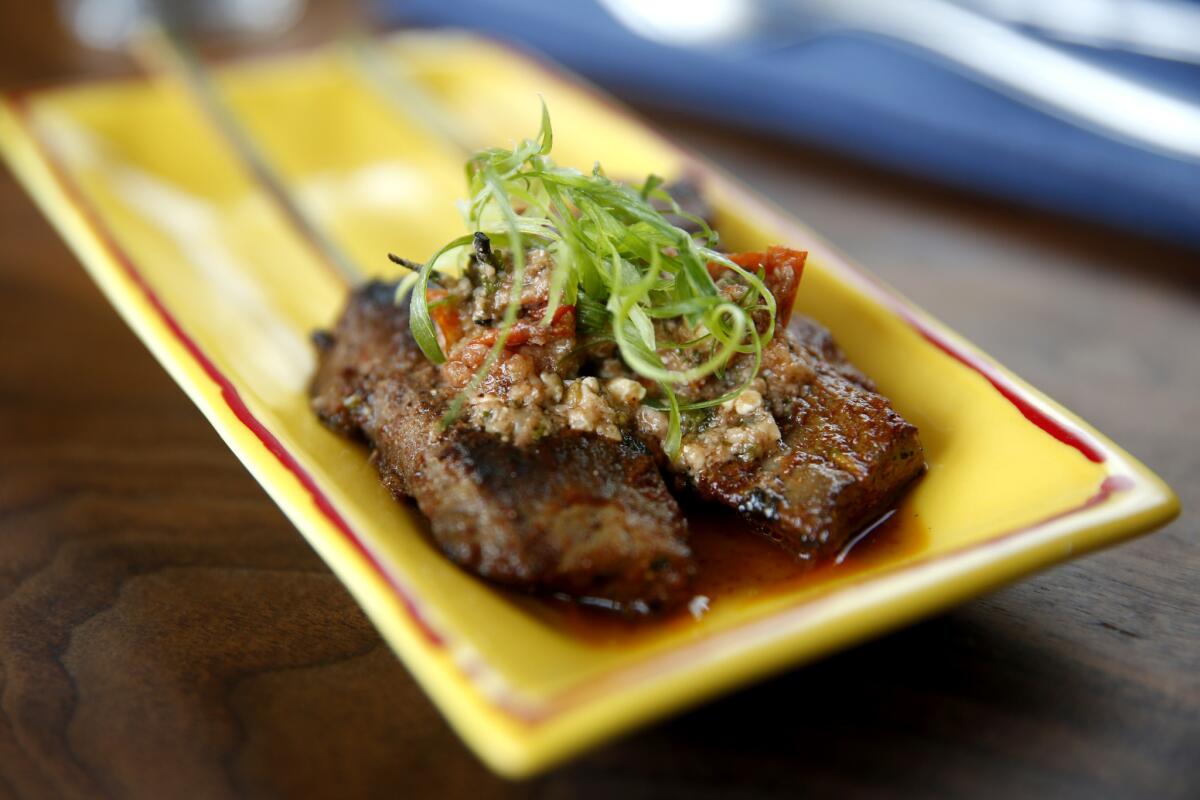
At Picca, Zarate made anticuchos, Lima-style kebabs, out of pretty much everything that could char over a flame. Here, he sticks to the traditional cubed beef heart, and like a good Miraflores street vendor, manages to make the cubed organ, crisp at the edges and singing with the flavors of citrus and the herb huacatay, taste as good as steak. Chicharrones of chicken, marinated bird fried to resemble fried pigskin, are everywhere. Zarate makes his from paiche, a giant river catfish he obtains from an Amazonian farm, and crusts it with toasted amaranth seed for extra crunch. You may blanch at the idea of paying $13 for an olive plate, but the olives are served with hot flatbread, roasted eggplant purée and giant corn nuts, which may strike you as the Andean equivalent of a Lebanese mezze platter.
There are big rice dishes at Rosaliné — one with seafood, one with chicken and the cheesy huancaína sauce you may have tasted on potatoes, one a shellfish-laden take on the Chinese-Peruvian fried rice called chaufa — and they are all tasty in their way (especially the porky chaufa), although they are a lot wetter, clumpier than you might prefer. The lomo saltado, lumps of filet mignon sautéed in a soy-based gravy with tomatoes and tiny new potatoes, manages to be less compelling than the fast-food version tossed with French fries usually manages to be, although the rib-eye steak marinated with anticucho spices is charred, salty and delicious.
You are on your third pisco sour by now — or beer, or glass of Moroccan syrah. (The wine list, with lots of bottles around $40, is both imaginative and gently priced.) You are contemplating ice cream bonbons or a slice of milk-soaked chancay cake for dessert. A waiter tries to remove the half-finished plate of chaufa from the table but you don’t let him. You have plans for those last two bits of fried Chinese sausage, and nothing is going to stand in your way.
::
Rosaliné
Ricardo Zarate’s latest experiment in Peruvian cuisine
LOCATION
8479 Melrose Ave., West Hollywood, (323) 297-9500, rosalinela.com.
PRICES
Small plates $8-$13; larger plates $16-$45 (some options higher); desserts $12.
DETAILS
Open Sun.-Thurs., 6 p.m. to 11 p.m.; Fri.-Sat., 6 p.m. to 11:30 p.m. Credit cards accepted. Full bar. Valet parking.
RECOMMENDED DISHES
Mushroom ceviche; olive plate; grilled branzino; lima bean salad; juane de chancho; chancay con leche.
More to Read
Sign up for The Wild
We’ll help you find the best places to hike, bike and run, as well as the perfect silent spots for meditation and yoga.
You may occasionally receive promotional content from the Los Angeles Times.
